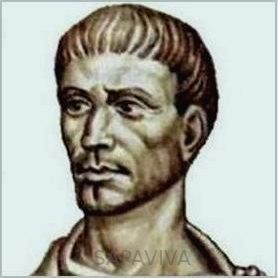(circa 210 – 290 AD)
More is known about Diophantus than his ancient compatriots. The two centuries preceding his birth saw those of Heron, Menelaus, and Claudius Ptolemy: all of whom were Egypt-oriented Alexandrian mathematicians. And although worlds apart, he was Liu Hui’s contemporary. Diophantus worked mainly on Algebra and Arithmetic. He is famous for inspiring several developments, which include Fermat’s Last Theorem. His most notable work, Arithmetica, is actually a series of 13 treatises which housed 130 queries on both Algebra and Number Theory. Only 6 of the original 13 survived. Despite offering solutions to those questions, his approach seemed arbitrary. Notwithstanding, their influences on both algebra and number theory were tremendous. His other publication, known simply as The Porisms was lost over the centuries. And in spite of having not survived, evaluators believe that it consisted of 3 lemmas (or subsidiary theorems called porismata), which he referenced in his Arithmetica. Diophantus is credited as the first of the Alexandrian mathematicians to realize the importance of fractions. It was his use of them in streamlining arithmetic problems that convinced several of his contemporaries to follow suit. He is also considered the first researcher to utilize symbolical expressions in abridging algebraic equations. The Renaissance would rekindle interests in primeval Egyptian masterpieces: prompting Regiomontanus to call for Arithmetica’s Latin translation in the 1460s. Rafael Bombelli accomplished that a century later. Diophantus is the eponym of numerous concepts which include: the Diophantine Equations, the Diophantine Approximations and Erdős-Diophantine Graph. Also dedicated to him is the 19-kilometer-wide Diophantus lunar impact crater.
All rights reserved. © Valentine Oduenyi


Well-researched & well-written
One of the great oldies!
Bravo! Bravo!!
Thanks!
Very good! Thanks for your efforts!
Salute to the man who inspired Pierre de Fermat’s Last Theorem.
Old soldier never die!
Absolutely amazing!
Like!! Thank you for publishing this awesome article.
Good web site! I love it.
This is excellent way to spend the extra time I have now. Thanks for sharing.
Added to my daily bloglist.
Well-written
Good link from Diophantus to Fermat.